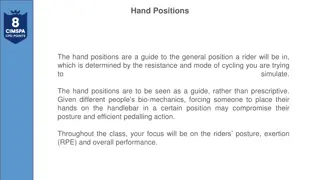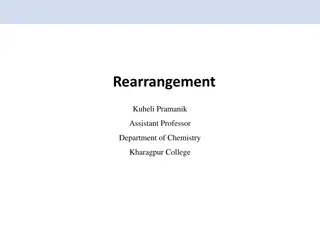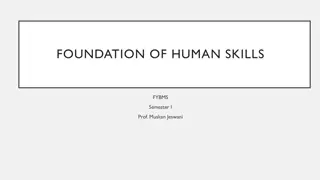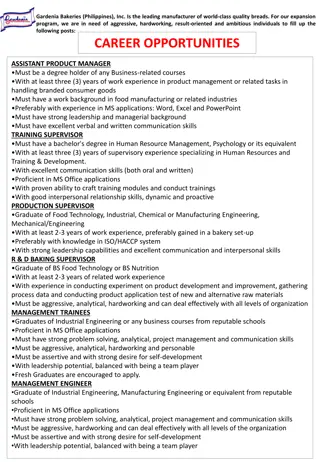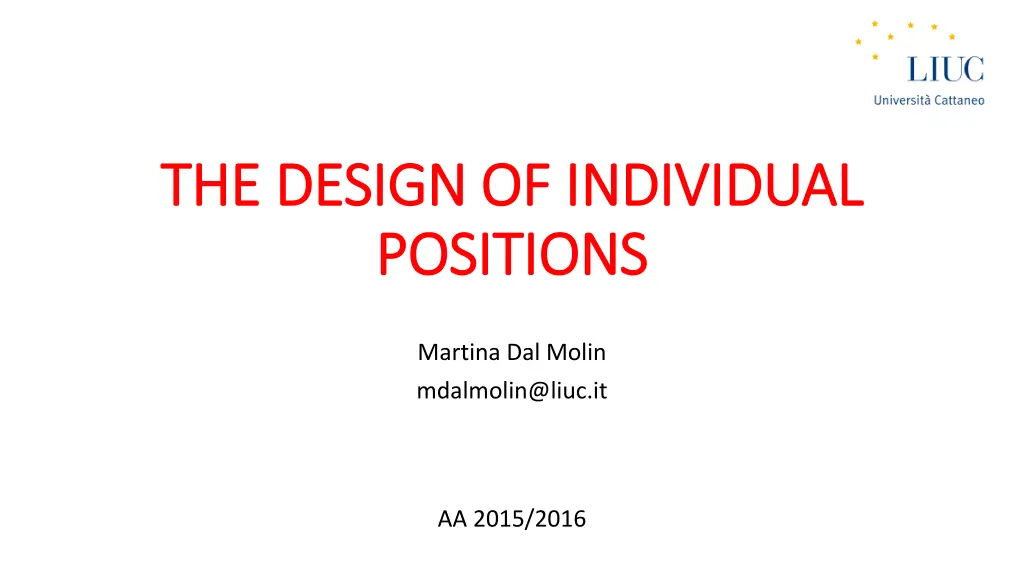
Organizational Design and Individual Positions in Management
Explore the intricacies of organizational design and individual positions within management, covering topics such as specialization of tasks, formalization of behavior, and the ability to modify core elements of an organization. Delve into key questions surrounding work positions and decision-making systems, and learn about the parameters of organizational design, including unit creation, division of labor, and formal authority.
Download Presentation

Please find below an Image/Link to download the presentation.
The content on the website is provided AS IS for your information and personal use only. It may not be sold, licensed, or shared on other websites without obtaining consent from the author. If you encounter any issues during the download, it is possible that the publisher has removed the file from their server.
You are allowed to download the files provided on this website for personal or commercial use, subject to the condition that they are used lawfully. All files are the property of their respective owners.
The content on the website is provided AS IS for your information and personal use only. It may not be sold, licensed, or shared on other websites without obtaining consent from the author.
E N D
Presentation Transcript
THE DESIGN OF INDIVIDUAL THE DESIGN OF INDIVIDUAL POSITIONS POSITIONS Martina Dal Molin mdalmolin@liuc.it AA 2015/2016
Agenda Agenda Introduction Specialization of tasks Formalization of the behaviour Training and indoctrination 2
Introduction Introduction What do you mean by DESIGN ? 3
The design of an The design of an organization organization Ability to modify a system To modify some organizational core elements (e.g. coordination mechanisms) that affect: o the division of labour oCoordination mechanisms Modification of the organizational functioning rules 4
Example Example of of key key questions questions How many activities should be related to a work position? How to standardize the output? How to standardize an activity? Which abilities and skills are required for a specific position? PARAMETERS of ORGANIZATIONAL How many organizational units are required? DESIGN Which mechanisms to facilitate the mutual adjustement? How many decision making power for managers? 5
The The parameters parameters of of organizational organizational design design Decision- making system Side- markers connection Macro- structure Individual position 6
The The parameters parameters of of organizational organizational design design Individual position Specialization of tasks Labour division Formalization of behaviour Standardization of processes Regulated flow system Training and indoctrination Standardization of skills 7
The The parameters parameters of of organizational organizational design design Macrostructure Units creation Direct supervision Division of labour Formal authority, informal communication, labour constellation Units dimension System of informal communication Direct supervision Control 8
The The parameters parameters of of organizational organizational design design Side marker connections Planning and control Output standardization Regulated flow system Connection mechanisms Mutual adjustment Informal communication, work constellation, ad hoc decision-makign processes 9
The The parameters parameters of of organizational organizational design design Decision-making system Vertical decentralization Division of labour Formal authority, labour constellation, ad hoc decision-making processes Horizontal decentralization Division of labour Informal communication, work constellation, ad hoc decision-makign processes 10
THE DESIGN of INDIVIDUAL THE DESIGN of INDIVIDUAL POSITION POSITION AA 2015/2016
Individual Individual position position Individual position Specialization of tasks Formalization of behaviour Training and indoctrination 12
Specialization Specialization of of tasks tasks Two dimensions Depth of control Extent of control Vertical specialization vs vertical task enlargement Horizontal specialization vs horizontal task enlargement 13
Horizontal Horizontal specialization specialization (1/2) (1/2) One man draws out the wire, another straights it, a third cuts it, a fourth points it, a fifth grinds it at the top for receiving, the head; to make the head requires two or three distinct operations; to put it on is a peculiar business, to whiten the pins is another; it is even a trade by itself to put them into the paper; and the important business of making a pin is, in this manner, divided into about eighteen distinct operations, which, in some manufactories, are all performed by distinct hands, though in others the same man will sometimes perform two or three of them (Adam Smith, 1910, p. 8) 14
Horizontal Horizontal specialization specialization (2/2) (2/2) The most popular form of labour division To improve productivity: Higher ability in specific operations Time savings New method and machinery development It increases labour repetitiveness, and, in turn, also labour standardization increases Focus oh the human-side , favoring learning Adaptation between workers and activities 15
Vertical Vertical specialization specialization Separation between execution and monitoring activities It is used to define how an activity has to be executed It is used when activities are highly specialized Who is in charge of monitoring activities executed? Managers, throuh direct supervision Analysists, through standardization 16
Tasks Tasks enlargement enlargement (1/3) (1/3) Tasks specialization lead to problems of o Communication o Coordination o Motivation (operating core) How to deal with these problems? The worker carries out activities and has control over them The worker carries out different activities related to TASKS ENLARGMENT the output Vertically Horizontally 17
Tasks Tasks specialization specialization within (1/2) (1/2) within the the organization organization 18
Tasks Tasks specialization specialization within (2/2) (2/2) within the the organization organization HORIZONTAL SPECIALIZATION High Low High VERTICAL SPECIALIZATION Low 19
Individual Individual position position Individual position Specialization of tasks Formalization of behaviour Training and indoctrination 20
Formalization Formalization of of behaviour behaviour (1/3) (1/3) Standardization of processes to decrease workers discretionality Processes could be standardized: By describing the details the activities By specifying the work processes Through rules In all of the three cases the behaviour is formalized and regulated 21
Formalization Formalization of of behaviour behaviour (2/3) (2/3) Why companies use the formalization of behavior? To coordinate activities To improve efficiency To ensure an impartial behaviour with respect to clients Criticalities: Resistance to change Bad client relationship Increase of absenteeism, turnover and strikes 22
Formalization Formalization of of behaviour behaviour (3/3) (3/3) 23
Individual Individual position position Individual position Specialization of tasks Formalization of behaviour Training and indoctrination 24
Training and Training and indoctrination indoctrination Definition of required skills and capabilities to carry out a specific activity Definition of recruitment procedures or the definition of training program to develop these skills and capabilities Training Learning and teaching Key role for professional activities Standardization of skills Indoctrination The process of socialization of people working in an organization It starts before the recruitment and it continues during the working relationship It is particularly relevant when activities are highly variables 25






